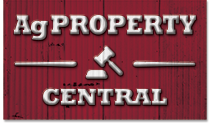
IN this week’s property review, recent increased buyer inquiry has given rise to a moderate and yet cautious start to the 2025 Central and North Queensland rural property market environment.
Regional North Queensland-based Preston Rowe Paterson property valuer and market observer Roger Hill said depending on what follow-up rain falls between now and Easter will determine how the local property market will pan out in 2025.

Roger Hill
“Seasonal conditions are typical for this time of year. However, given the way the rain has fallen over the wet to date, along with the varied grass response, it is getting critical for 2025,” Mr Hill said.
In terms of grass, it is still patchy in many areas of North Queensland, heading deeper into March.
“This season, one wheel-track on a road could be dry, whereas the other was wet,” he said.
Mr Hill said livestock movements were being planned to sell-down numbers – if need be.
“Western producers lucky enough to receive the early rain and follow-up falls in February have had some good quality grass growth. However, in some areas, the February rain did not deliver much grass.”
“There was a bit of a start in the Stonehenge to Jundah and Opalton districts. Then, as you head north through Winton towards Corfield, the grass is very patchy. Hopefully, the situation will change with follow up rain this month,” he said.
To the east of the Great Divide, where there were big falls in February, Mr Hill reports a varied response.
“On lighter granite country, the grass has grown well and is starting to hay off. Reports on the basalt indicate there is yet to be a solid body of grass growth.”
If there was follow-up rain in central, northern and western areas of Queensland, then there might well be renewed property inquiry from southerners because the further south, the patchier the grass was, Mr Hill said.
Easter decision-making point
While it was still early days, March and April would be critical as to how the seasonal year pans out.
“Easter is often a decision-point for property sales activity and while waiting to see if, when and how much follow-up rain falls, there are several factors to consider,” he said. These included:
- Interest rates – the Reserve Bank moved to cut interest rates by 25 basis points in February. How long that takes to filter through would depend on individual debt structures and bank pricing.
- Cattle market – prices have inched their way up to recover some of the lost ground from the market high of 2022. Market sentiment has been confident for stronger pricing in 2025 and into 2026. Recent global political risks and trade interactions are on people’s minds.
- Feedlots have expanded, and cattle in feedlots have increased since 2000. MLA data indicates there is almost 1.5 times the number of cattle on feed compared to the early 2000s.
- Live export boat orders have been busy, and agents report reasonable quotes out of Cloncurry. This certainly moved a few head of cattle and may well increase in March.
- If Cyclone Alfred brings rain to areas of New South Wales, agents indicate this would help to uphold the current trend of steer demand and pricing.
- The looming Federal Election and the long-term impacts for northern primary production industries, including the live sheep trade out of Western Australia.
- Breeding programs – in the recent cycle towards flatbacks, there were some reminders of why moderate levels of bos indicus content is required in the north last year. There were a few ticks around.
- Marketing – Wagyu and Angus continue their breed marketing and growth in numbers. It can be difficult to sell lines of Brahmans into the domestic market from time to time. Live export and direct consignment to the works is preferred over domestic sales.
- Unimproved land valuations – because improved property values increased from 2016 to 2022, does not mean that unimproved land values are correct.
Mr Hill said there could be a higher number of properties coming to the market this year than in 2024.
“Reasons include succession, retirement, dissolution of partnerships, trading up to larger property, some stock offered last year is still available and there are other producers sitting on the fence deciding whether to sell or not.”
“There is no doubt, emotion plays a large part in the decision-making process, however season, marketability and reasonable money will tip the balance in favour of selling.”
It is not always a sellers’ market, according to Mr Hill.
“Given the solid market value increases since 2016 while interest rates were low, the market had to slow down at some stage. As 2024 showed, it is not time to ride short in the stirrups for big time Charlie pricing now.”
He said in some cases last year, buyers re-priced their due diligence and as a result, some places were still on the market.
“Sometimes there is a gap between vendor expectations, buyer due diligence and buyer pricing. With an increased supply coming to market, new vendors appear to be more realistic in their price expectations,” he said.
“While there is a chance some of those properties may be withdrawn, if they remain on the market, they will be competing with new stock.”
Mr Hill reports renewed interest particularly from southern producers and from the Northern Territory.
“In January, parts of southern Queensland and northern New South Wales to the Murray River in Victoria were dry and lacking grass reserves. While Cyclone Alfred could change that this week and bring good rain to some areas, producers have been looking north for more reliable rainfall country.”
“This new wave of interest is coming from buyers seeking breeding blocks and grass. Others are taking the opportunity to diversify from Northern Territory into Queensland. However, it is important to note this does not necessarily mean market values will rise, that is the market’s choice.”
Mr Hill reports while there is carryover listings on the market from last year, there were a number of successful sales too, particularly in the Longreach area.
A Beef Central summary includes:
- 9569ha Darriveen – 75km north of Longreach sold for $6.2m ($648/ha).
- 8231ha Yanburra – 45km north-east of Longreach, with development potential, sold for $4.77m or $580/ha.
- 15,346ha Linamar – 22km south of Isisford & 120km south-west of Blackall sold for more than $10m.
- 10,898ha Rosabel – 60km south of Longreach. Sold at auction for $7.3m.
- 11,119ha Glenroc – well developed property, 15km south of Gumlu near Home Hill, sold after auction for an undisclosed figure.
- 235,932ha Bowthorn Station – Gulf breeding country with an approved carbon project, 70km from Doomadgee & 170km west of Burketown, sold on a WIWO basis including 6053 breeders & followers.
- 31,474ha Gattonvale Holding – beef breeding & finishing country, 32km from Collinsville, sold for $70m plus – WIWO sale included 4900 cattle (1900 breeders & followers).
- 5454ha Glenkirk – coastal breeding property, east of Mingela & south of Townsville, sold for $5.3m WIWO.
- 16,9998ha Enryb Downs – 25km south-east of Corfield sold for an undisclosed sum.
- 68,500ha Springfield Station – breeder operation, 30km south-east of Mount Surprise, was sold for an undisclosed sum WIWO including 7000 branded cattle.
- Adjoining grazing & irrigation blocks, 830ha Billabong & 547ha Keshvale, near Woodstock, 50km south of Townsville, sold separately for an undisclosed price.
- 19,248ha Marathon – breeding, backgrounding & finishing, 40km east of Richmond. Sold for more than $20m including 2000 cattle.
- 9962ha Rocky Springs – freehold breeding, backgrounding & finishing block, 15km from Mount Surprise. Abundantly watered. Sale included 1400 breeders & calves & 500 dry cattle.
Mr Hill said rural properties should change hands within a six-month marketing window, if they are priced correctly for the market of the day.
In the short term, he said it was important that people carry out proper due diligence.
“With the uncertainty around, it is not time to make mistakes.”
Beef Central noted the following properties currently for sale across the region:
- 225,800ha Mutton Hole (140,300ha) and Oakland Park (85,500ha) – breeding country in the Gulf of Carpentaria.
- 30,284ha Woodhouse Station – breeding country with some irrigation near Clare, 50km south-west of Ayr. WIWO with 6530 cattle.
- 10,062ha Helen Downs – cattle & sheep country, 72km south-east of Julia Creek. Open black soil Mitchell grass downs country.
- 86,416ha Valley of Lagoons Aggregation – picturesque breeding, backgrounding & finishing country, 45km north of Greenvale. Listed as a whole or three separate properties – 9387ha Reedybrook Station, 25,200ha Hopewell Station & 51,829ha Valley of Lagoons.
- 43,500ha Gorge Creek Station – breeder property with renewable energy potential, 220km north of Hughenden. Offered with 1900 branded females & followers & some plant.
- 11,264ha Raelee Downs – well developed, backgrounding, breeding & fattening property, 40km west of Corfield & 112km south of Richmond.
- 96,609ha Vanlee Station – breeder operation, 75km north-east of Georgetown & 104km west of Mt Surprise. Sale includes 6320 cattle including 4000 breeders.
- 71,600ha Coralie Station – low-cost breeding enterprise with an active carbon project, 70km south-west of Croydon.
- 10,312ha Moonby Station – fully exclusion fenced, backgrounding or fattening block for sheep or cattle, 37km south-west of Hughenden..
- 9269ha Barragunda – open downs breeding, backgrounding or fattening country, 67km south of Hughenden.
- 46,000ha Burlington Station – breeding & backgrounding enterprise, 50km north of Mt Surprise. WIWO including 3200 females, 100 bulls & up to 1200 weaners.

HAVE YOUR SAY